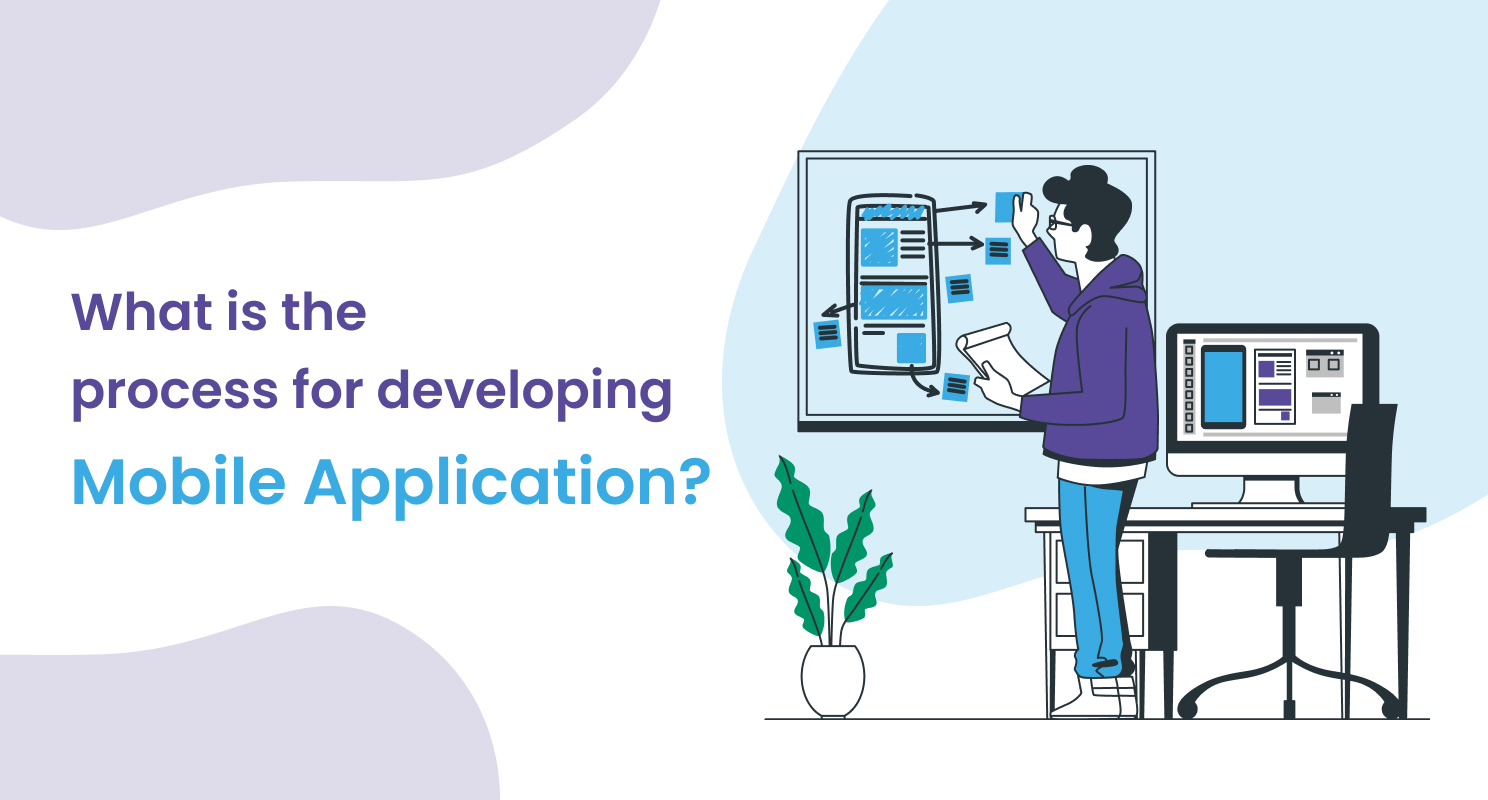10 April 2024
Published by

Embarking on the journey of creating a mobile app can be an exhilarating adventure. Let’s walk through the easy steps from thinking up your app idea to launching it on app stores. Usually, there are seven steps in the process, and we’ll go through them one by one. The details might change based on your unique project, but the overall sequence stays the same. Let’s make the world of mobile app development simple and exciting.

At the heart of every successful app is a well-crafted strategy. The journey begins by defining your app’s goals, researching the market, understanding your audience, and estimating the project’s cost. This is the stage where your dream takes shape, and your team selects the right technology stack and features, ensuring a solid foundation for the development journey.
With a clear strategy, it’s time to analyze the gathered information and create a meticulous development plan. The result? A product roadmap that outlines the path from idea to implementation, setting the stage for a smooth development process.
The design phase is where the magic happens. Designers work on the user experience, wireframes, style guides, and mockups, ensuring a visually appealing and user-friendly app. The final touch is the creation of application design prototypes, setting the stage for the development journey.
The developers take center stage, implementing the app features using the chosen technology stack. This step results in a fully functional front-end and back-end, laying the groundwork for a robust mobile application.
Before the grand reveal, QA specialists step in to test the app for functionality, performance, security, and usability. This crucial step identifies and fixes bugs, ensuring a flawless user experience.
With a polished app, it’s time to launch it into the market. Choose the right distribution models for platforms like Apple App Store or Google Play Store, and implement marketing strategies to make your app stand out.
The final step is a continuous one. Post-launch, your team focuses on supporting and improving the app, releasing new features, implementing design changes, and fixing bugs based on user feedback.
Mobile App Development Process: A Closer Look at the Journey
Let’s now explore the different aspects of developing mobile apps and clarify the differences between front-end and back-end development. Gaining a thorough understanding of these essential elements will provide you a complete picture of the entire development process.

Front-end development focuses on the visible elements of your mobile app – the user interface (UI). Here, specialists employ different approaches based on your app’s platform.
Front-end developers work tirelessly to synchronise the visible part of the app with the back-end, ensuring seamless functionality and an engaging user experience.

While front-end development deals with the visible aspects, back-end development focuses on the server-side, handling the underlying code critical for your app’s overall performance and scalability.
In essence, while front-end developers focus on what users see and interact with, back-end developers work behind the scenes to ensure that the app’s engine runs smoothly.
The journey doesn’t end with the app hitting the market. Post-launch support and maintenance become paramount for sustaining your app’s success.
In conclusion, mobile app development is not just about coding; it’s a dynamic process involving strategic planning, meticulous design, and continuous improvement. With a dedicated team and the right approach, your app can not only sail smoothly through the development process but also thrive in the competitive seas of the app market.
1. How long does it take to develop a mobile app?
The development time varies based on factors like team size, feature complexity, and chosen technologies. Generally, a simple app may take a few months, while more complex projects can extend the timeline.
2. What makes a successful mobile app?
Success hinges on a well-defined strategy, engaging design, robust development, thorough testing, effective deployment, and ongoing post-launch support. User feedback and adaptability are also crucial for sustained success.
3. How do I choose the right development team for my app?
Look for a team with diverse skills, experience in your app’s industry, and a proven track record. Consider their portfolio, client reviews, and communication style to ensure a smooth collaboration.
4. What are the essential features of a mobile app?
Essential features vary based on your app’s purpose, but generally include a user-friendly interface, seamless navigation, secure data handling, and efficient performance. Features should align with user needs.
5. How do I monetize my mobile app?
There are various monetization models, such as in-app purchases, subscription plans, advertisements, and affiliate marketing. Choose a model that aligns with your app’s nature and target audience.